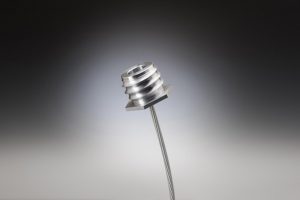 Bergen Cable wire rope solutions: The risks of bending them
Bergen Cable wire rope solutions: The risks of bending them
December 4, 2019 REDWIRE is news you can use from leading suppliers. Powered by FRASERS.
Posted by Bergen Cable Technology, Inc
Mfr Mechanical Cable, Cable Assemblies & Push-Pull Controls. Original Mfr Of Safety Cable, A Patented Fastener Reten... Read more
Subscribe
Free REDWIRE e-newsletter

Wire rope is a specialty of Bergen Cable.
Wire rope solutions are a big reason why many businesses rely on Bergen Cable, in addition to its cable inventory. But the company is not merely a provider of great industrial solutions; it is also a team of experts who know how customers can use these products to their full potential.
Bergen’s website offers valuable resources about using cable and wire rope solutions – such as a guide to the adverse effects of bending wire rope.
Larger sheaves to minimize damage
Wire rope is often subject to bending around sheaves or drums, and its usefulness often depends on the sheaves’ and drums’ locations. It is wise to lubricate wire rope solutions properly to make them effective around these items, because the wires and strands slide on each other during bending.
According to Bergen, loss of rope strength can result from the inability of strands and wires to adjust to changed positions during rope bending. Wire-rope strength tends to decrease in a marked degree as the sheave diameter gets smaller relative to the rope diameter, and this strength loss from bending over sheaves is typically about four per cent. Meanwhile, repeated flexing of wires develops bending loads that set up points of stress concentration, even when within the wire’s elastic limit.
Fatigue is another common effect of wire-rope bending. This appears in the form of small cracks in wires at overstressed foci, which propagate under repeat stress cycles until the last sound metal cannot handle the bending load. This results in broken wires that show no sign of contraction of cross-section.
Many factors affect the operational life of wire rope, so it is impossible to determine what the smallest size of sheave or drum is that allows the rope to perform effectively. With light loads and slow speeds, smaller sheaves and drums can be used without resulting in premature fatigue, and reverse bends (bending wire rope in one direction and then the opposite way) may result in high and premature fatigue. If the application requires reverse bends, larger sheaves are necessary in order to minimize damage.
For more information, contact Bergen Cable.
Share
Posted by Bergen Cable Technology, Inc
Mfr Mechanical Cable, Cable Assemblies & Push-Pull Controls. Original Mfr Of Safety Cable, A Patented Fastener Reten... Read more
